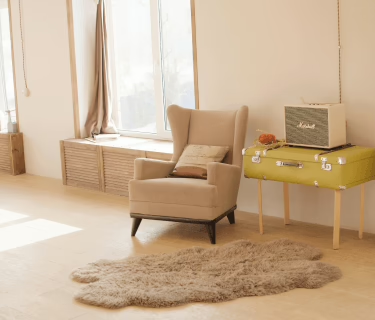Wooden furniture and flooring add a timeless charm to any home, but they are not immune to accidental spills. Whether it’s a splash of wine during dinner or a cleaning mishap with rubbing alcohol, these stains can leave frustrating white marks or discoloration on your wooden surfaces. But don’t worry—removing alcohol stains from wood is easier than you might think, and with the right approach, you can restore your furniture to its original glory.
In this guide, we’ll walk you through how to get alcohol stains out of wood using simple household ingredients and expert techniques.
Understanding Alcohol Stains on Wood
Before diving into solutions, it helps to understand why alcohol stains wood. Alcohol acts as a solvent, which means it can break down protective finishes, leaving behind dull, white marks or even penetrating the wood itself. The severity of the stain depends on how long the alcohol sat on the surface and whether the wood was sealed.
The key to removing these stains is acting quickly. The longer the stain sits, the deeper it can seep into the wood, making it harder to remove.
Quick and Easy Ways to Remove Alcohol Stains from Wood
1. Blot the Stain Immediately
If the spill is fresh, grab a paper towel or a clean cloth and blot (don’t rub!) the area to absorb as much liquid as possible. Rubbing can push the alcohol deeper into the wood, making the stain worse.
2. Use Cooking Oil for Mild Stains
One of the simplest ways to lift alcohol stains is using oil. Cooking oils like olive, coconut, or canola can help restore moisture and remove the white marks left behind.
How to Use Oil to Remove Alcohol Stains:
- Dip a soft cloth into the oil of your choice.
- Rub the stained area using gentle, circular motions.
- Continue until the white marks start fading.
- Wipe the surface with a clean, dry cloth to remove excess oil.
This method works well for minor stains but may not be effective on deeper discoloration.
3. Make a Baking Soda Paste for Stubborn Stains
Baking soda is a great natural cleaner that can lift stubborn alcohol stains from wood.
How to Use Baking Soda:
- Mix one tablespoon of baking soda with a few drops of water to create a thick paste.
- Apply the paste to the stain using a soft cloth.
- Rub gently in circular motions.
- Wipe off the residue with a damp cloth and let the wood dry.
This method is particularly useful for older stains that have settled into the wood.
4. Try Toothpaste for White Alcohol Rings
Toothpaste—especially the non-gel, white kind—can work wonders on alcohol stains by acting as a mild abrasive.
How to Use Toothpaste:
- Apply a small amount of white toothpaste directly to the stain.
- Rub the area with a soft cloth in circular motions.
- Let it sit for a minute, then wipe clean with a damp cloth.
If needed, repeat the process until the stain disappears.
5. Rubbing Alcohol for Alcohol Stains? Yes, But With a Twist!
It may sound ironic, but using rubbing alcohol can help remove an alcohol-based stain—when diluted properly.
How to Do It Safely:
- Mix equal parts of rubbing alcohol and water.
- Dampen a cloth with the solution and gently rub the stain.
- Immediately wipe the area with a clean, dry cloth.
This method works best on unfinished or lightly finished wood. If your wood has a strong protective coating, test a small hidden area first.
Removing Deep Alcohol Stains from Wood
If home remedies don’t completely lift the stain, you may need to take a more aggressive approach.
6. Use Vinegar and Water for Dark Stains
Vinegar is a powerful cleaner that can help lift deep-set stains while being gentle on wood.
Steps to Remove Deep Alcohol Stains with Vinegar:
- Mix one part white vinegar with two parts water.
- Dampen a soft cloth with the solution and gently rub the stain.
- Wipe the area clean with a dry cloth.
- If necessary, repeat the process until the stain fades.
7. Sanding and Refinishing for Severe Stains
If the stain has penetrated too deeply into the wood grain, sanding and refinishing may be the only option.
Steps for Sanding and Refinishing:
- Lightly sand the affected area with fine-grit sandpaper.
- Wipe away dust with a damp cloth.
- Apply a wood stain or furniture polish that matches the original color.
- Finish with a protective sealant to prevent future stains.
This method should be a last resort, as it alters the wood’s surface. However, it’s the best option for restoring heavily damaged furniture.
How to Prevent Alcohol Stains on Wood
Prevention is always better than cure! Here are a few ways to keep your wood surfaces safe from future alcohol spills:
- Use Coasters and Placemats: Placing a protective barrier between wood and drinks prevents direct contact.
- Apply a Protective Wood Finish: A high-quality sealant can help resist stains and spills.
- Clean Spills Immediately: The faster you act, the less damage alcohol can do to your wood.
- Regular Polishing: Using a furniture polish or wax creates a protective layer that makes cleaning up easier.
Final Thoughts
Alcohol stains on wood don’t have to be a permanent eyesore. With a few household items and a little patience, you can restore your wooden surfaces and keep them looking pristine. Whether you opt for simple methods like oil and toothpaste or go the extra mile with sanding and refinishing, the key is to act quickly and use gentle techniques. If you’d rather leave the heavy lifting to the professionals, consider expert cleaning services in Denver to keep your home spotless.


